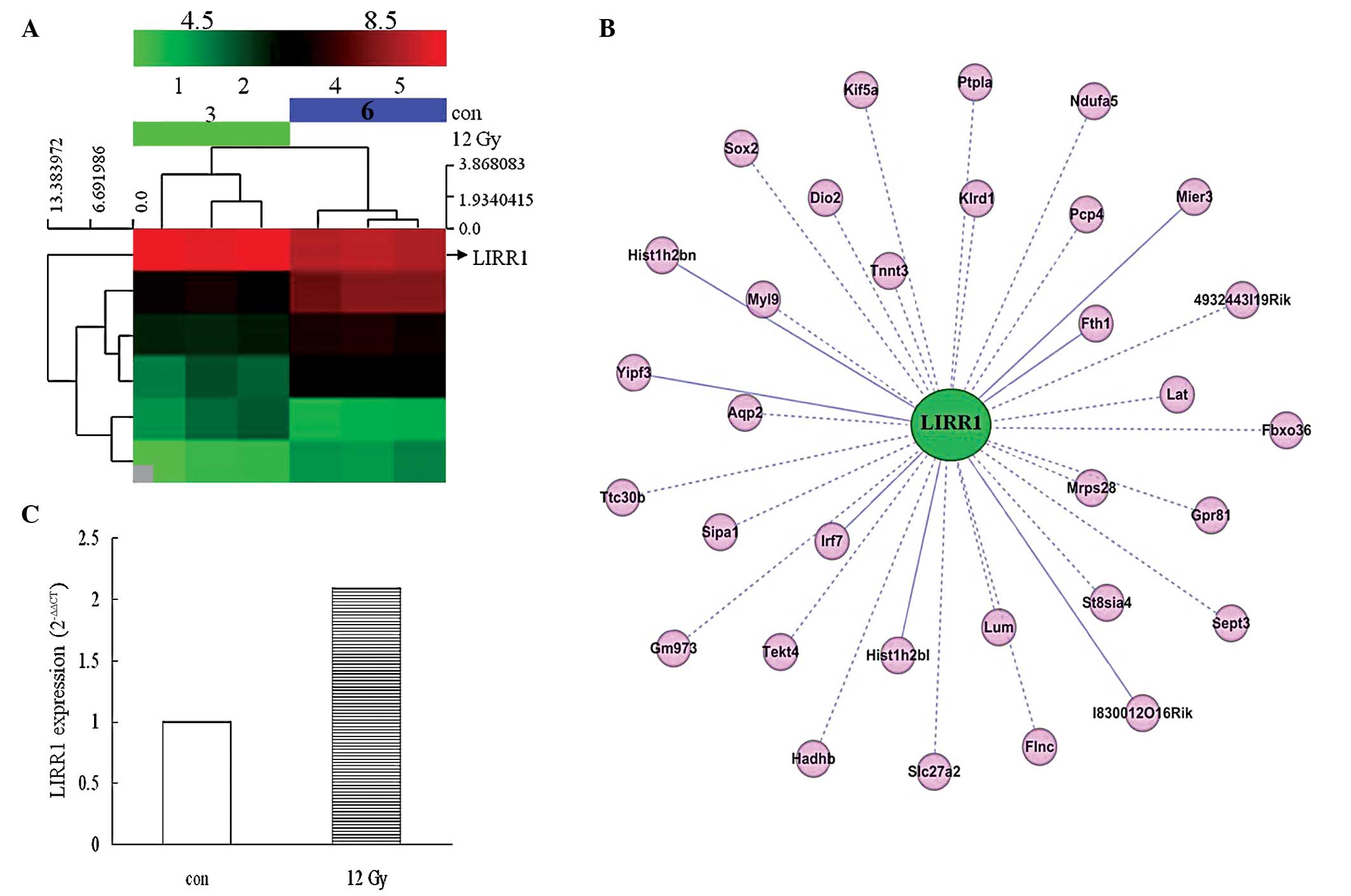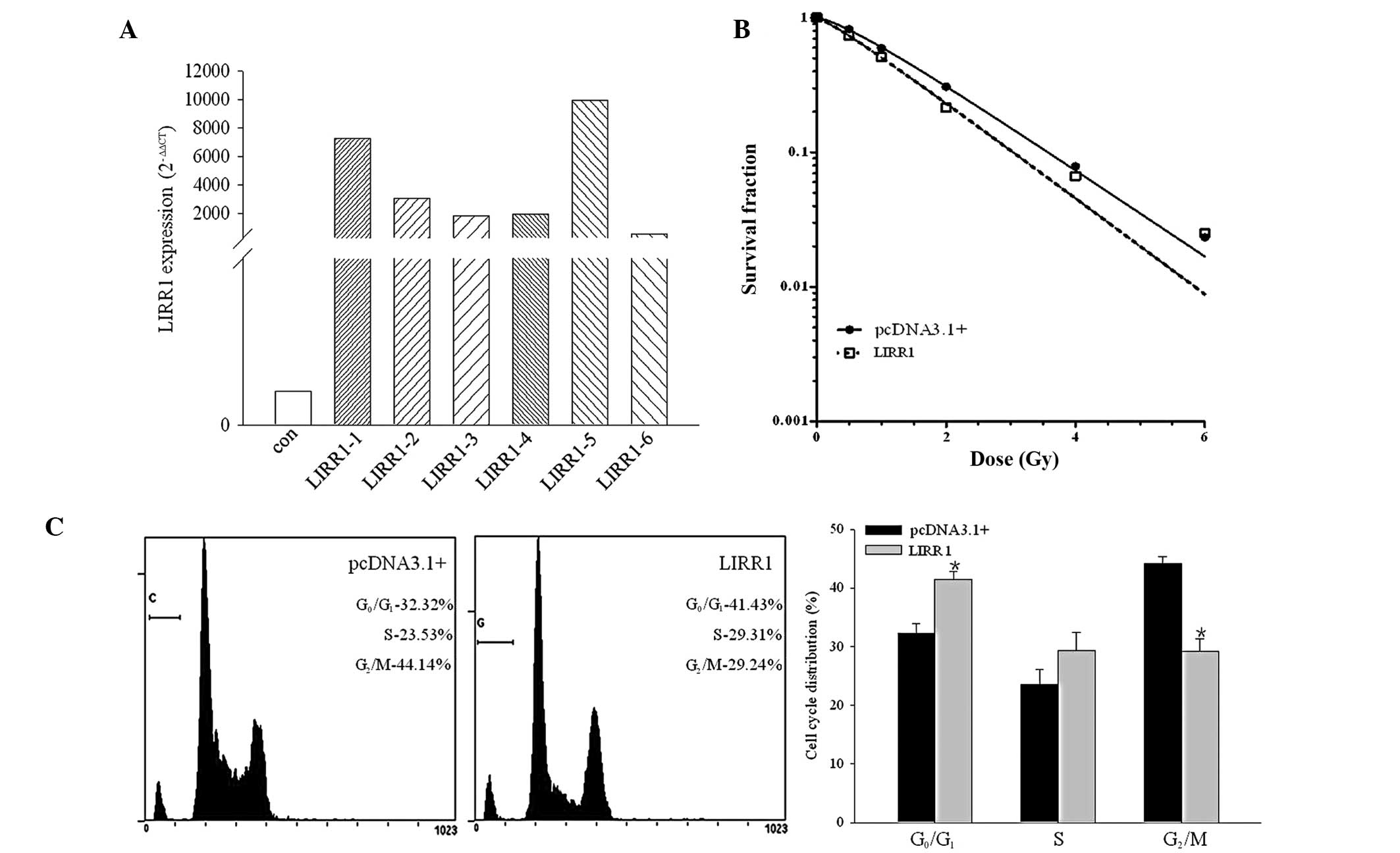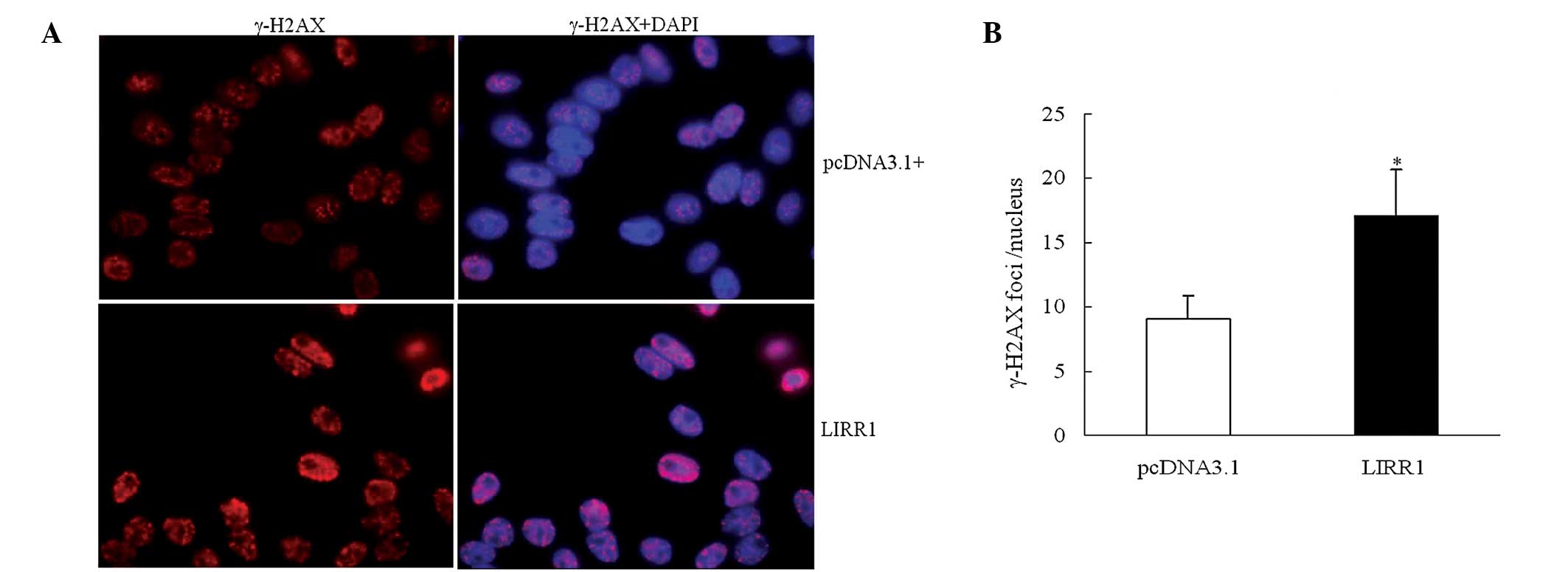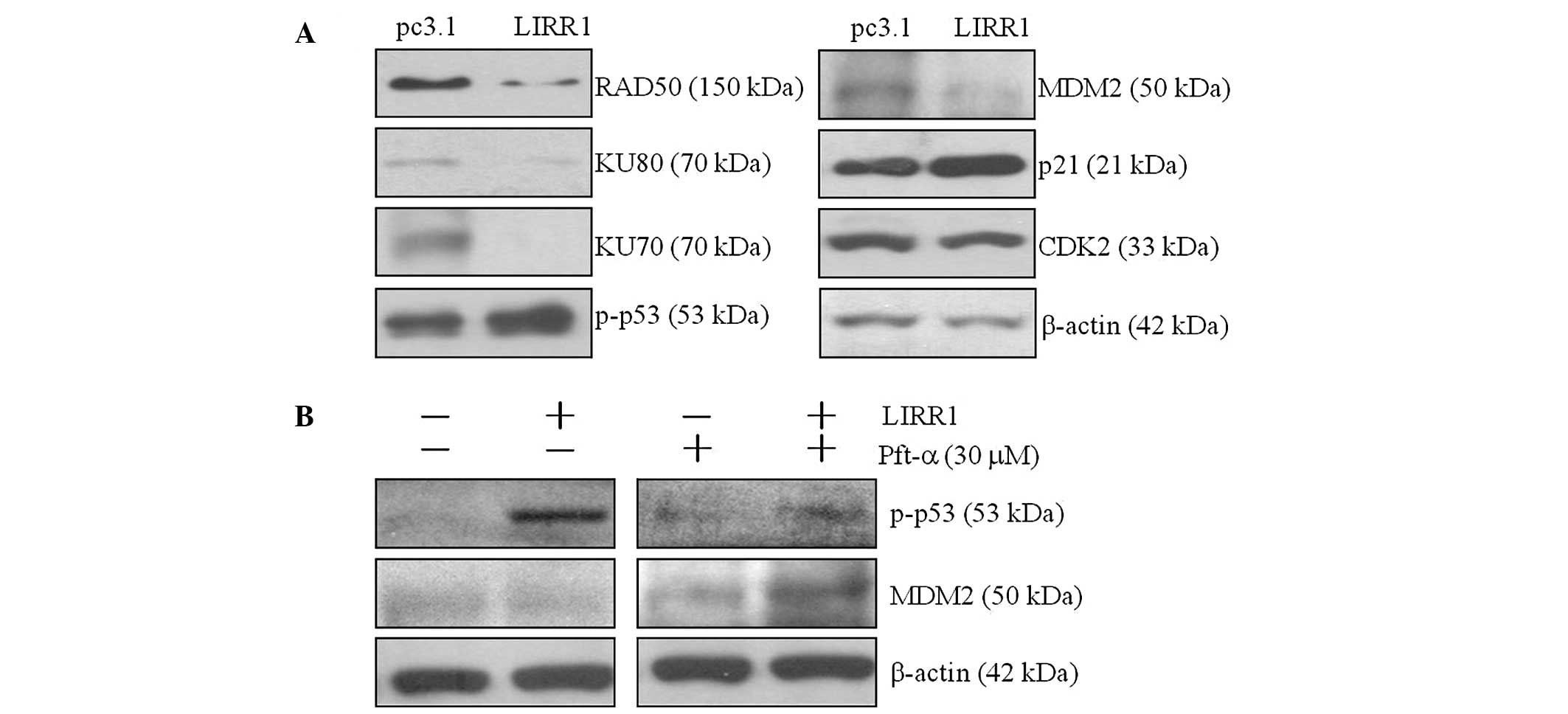|
1
|
Puthawala K, Hadjiangelis N, Jacoby SC,
Bayongan E, Zhao Z, Yang Z, Devitt ML, Horan GS, Weinreb PH,
Lukashev ME, et al: Inhibition of integrin alpha(v)beta6, an
activator of latent transforming growth factor-beta, prevents
radiation-induced lung fibrosis. Am J Respir Crit Care Med.
177:82–90. 2008. View Article : Google Scholar
|
|
2
|
Christofidou-Solomidou M, Tyagi S, Tan KS,
Hagan S, Pietrofesa R, Dukes F, Arguiri E, Heitjan DF, Solomides CC
and Cengel KA: Dietary flaxseed administered post thoracic
radiation treatment improves survival and mitigates
radiation-induced pneumonopathy in mice. BMC Cancer. 11:2692011.
View Article : Google Scholar : PubMed/NCBI
|
|
3
|
Mathew B, Jacobson JR, Berdyshev E, Huang
Y, Sun X, Zhao Y, Gerhold LM, Siegler J, Evenoski C, Wang T, et al:
Role of sphingolipids in murine radiation-induced lung injury:
protection by sphingosine 1-phosphate analogs. FASEB J.
25:3388–3400. 2011. View Article : Google Scholar : PubMed/NCBI
|
|
4
|
Oh JH, Craft JM, Townsend R, Deasy JO,
Bradley JD and El Naqa I: A bioinformatics approach for biomarker
identification in radiation-induced lung inflammation from limited
proteomics data. J Proteome Res. 10:1406–1415. 2011. View Article : Google Scholar : PubMed/NCBI
|
|
5
|
Yang X, Walton W, Cook DN, Hua X, Tilley
S, Haskell CA, Horuk R, Blackstock AW and Kirby SL: The chemokine,
CCL3, and its receptor, CCR1, mediate thoracic radiation-induced
pulmonary fibrosis. Am J Respir Cell Mol Biol. 45:127–135. 2011.
View Article : Google Scholar :
|
|
6
|
Guttman M, Amit I, Garber M, French C, Lin
MF, Feldser D, Huarte M, Zuk O, Carey BW, Cassady JP, et al:
Chromatin signature reveals over a thousand highly conserved large
non-coding RNAs in mammals. Nature. 458:223–227. 2009. View Article : Google Scholar : PubMed/NCBI
|
|
7
|
Cabili MN, Trapnell C, Goff L, Koziol M,
Tazon-Vega B, Regev A and Rinn JL: Integrative annotation of human
large intergenic noncoding RNAs reveals global properties and
specific subclasses. Genes Dev. 25:1915–1927. 2011. View Article : Google Scholar : PubMed/NCBI
|
|
8
|
Guttman M, Amit I, Garber M, French C, Lin
MF, Feldser D, Huarte M, Zuk O, Carey BW, Cassady JP, et al:
Chromatin signature reveals over a thousand highly conserved large
non-coding RNAs in mammals. Nature. 458:223–227. 2009. View Article : Google Scholar : PubMed/NCBI
|
|
9
|
Tsai MC, Spitale RC and Chang HY: Long
intergenic noncoding RNAs: new links in cancer progression. Cancer
Res. 71:3–7. 2011. View Article : Google Scholar : PubMed/NCBI
|
|
10
|
Silva JM, Perez DS, Pritchett JR, Halling
ML, Tang H and Smith DI: Identification of long stress-induced
non-coding transcripts that have altered expression in cancer.
Genomics. 95:355–362. 2010. View Article : Google Scholar : PubMed/NCBI
|
|
11
|
Mizutani R, Wakamatsu A, Tanaka N, Yoshida
H, Tochigi N, Suzuki Y, Oonishi T, Tani H, Tano K, Ijiri K, et al:
Identification and characterization of novel genotoxic
stress-inducible nuclear long noncoding RNAs in mammalian cells.
PLoS One. 7:e349492012. View Article : Google Scholar : PubMed/NCBI
|
|
12
|
Sonkoly E, Bata-Csorgo Z, Pivarcsi A,
Polyanka H, Kenderessy-Szabo A, Molnar G, Szentpali K, Bari L,
Megyeri K, Mandi Y, et al: Identification and characterization of a
novel, psoriasis susceptibility-related noncoding RNA gene, PRINS.
J Biol Chem. 280:24159–24167. 2005. View Article : Google Scholar : PubMed/NCBI
|
|
13
|
Huarte M, Guttman M, Feldser D, Garber M,
Koziol MJ, Kenzelmann-Broz D, Khalil AM, Zuk O, Amit I, Rabani M,
et al: A large intergenic noncoding RNA induced by p53 mediates
global gene repression in the p53 response. Cell. 142:409–419.
2010. View Article : Google Scholar : PubMed/NCBI
|
|
14
|
Tsai MC, Spitale RC and Chang HY: Long
intergenic noncoding RNAs: new links in cancer progression. Cancer
Res. 71:3–7. 2011. View Article : Google Scholar : PubMed/NCBI
|
|
15
|
Johnston CJ, Manning C, Hernady E, Reed C,
Thurston SW, Finkelstein JN and Williams JP: Effect of total body
irradiation on late lung effects: hidden dangers. Int J Radiat
Biol. 87:902–913. 2011. View Article : Google Scholar : PubMed/NCBI
|
|
16
|
Zaidi A, Jelveh S, Mahmood J and Hill RP:
Effects of lipopolysaccharide on the response of C57BL/6J mice to
whole thorax irradiation. Radiother Oncol. 105:341–349. 2012.
View Article : Google Scholar : PubMed/NCBI
|
|
17
|
Jiao Y, Ge CM, Meng QH, Cao JP, Tong J and
Fan SJ: Adenovirus-mediated expression of Tob1 sensitizes breast
cancer cells to ionizing radiation. Acta Pharmacol Sin.
28:1628–1636. 2007. View Article : Google Scholar : PubMed/NCBI
|
|
18
|
Jiao Y, Sun KK, Zhao L, Xu JY, Wang LL and
Fan SJ: Suppression of human lung cancer cell proliferation and
metastasis in vitro by the transducer of ErbB-2.1 (TOB1). Acta
Pharmacol Sin. 33:250–260. 2012. View Article : Google Scholar
|
|
19
|
Khalil AM, Guttman M, Huarte M, Garber M,
Raj A, Rivea Morales D, Thomas K, Presser A, Bernstein BE, van
Oudenaarden A, Regev A, Lander ES and Rinn JL: Many human large
intergenic noncoding RNAs associate with chromatin-modifying
complexes and affect gene expression. Proc Natl Acad Sci USA.
106:11667–11672. 2009. View Article : Google Scholar : PubMed/NCBI
|
|
20
|
Sugrue T, Brown JA, Lowndes NF and Ceredig
R: Multiple facets of the DNA damage response contribute to the
radioresistance of mouse mesenchymal stromal cell lines. Stem
Cells. 31:137–145. 2013. View Article : Google Scholar
|
|
21
|
Foltánková V, Legartová S, Kozubek S,
Hofer M and Bártová E: DNA-damage response in chromatin of
ribosomal genes and the surrounding genome. Gene. 522:156–167.
2013. View Article : Google Scholar : PubMed/NCBI
|
|
22
|
Shiloh Y and Ziv Y: The ATM protein
kinase: regulating the cellular response to genotoxic stress, and
more. Nat Rev Mol Cell Biol. 14:197–210. 2013. View Article : Google Scholar : PubMed/NCBI
|
|
23
|
Cipressa F and Cenci G: DNA damage
response, checkpoint activation and dysfunctional telomeres: face
to face between mammalian cells and Drosophila. Tsitologiia.
55:211–217. 2013.PubMed/NCBI
|
|
24
|
Senturk E and Manfredi JJ: p53 and cell
cycle effects after DNA damage. Methods Mol Biol. 962:49–61. 2013.
View Article : Google Scholar
|
|
25
|
Insinga A, Cicalese A, Faretta M, Gallo B,
Albano L, Ronzoni S, Furia L, Viale A and Pelicci PG: DNA damage in
stem cells activates p21, inhibits p53, and induces symmetric
self-renewing divisions. Proc Natl Acad Sci USA. 110:3931–3936.
2013. View Article : Google Scholar : PubMed/NCBI
|
|
26
|
Roos WP and Kaina B: DNA damage-induced
cell death: from specific DNA lesions to the DNA damage response
and apoptosis. Cancer Lett. 332:237–248. 2013. View Article : Google Scholar
|
|
27
|
Jiang G, Plo I, Wang T, Rahman M, Cho JH,
Yang E, Lopez BS and Xia F: BRCA1-Ku80 protein interaction enhances
end-joining fidelity of chromosomal double-strand breaks in the G1
phase of the cell cycle. J Biol Chem. 288:8966–8976. 2013.
View Article : Google Scholar : PubMed/NCBI
|
|
28
|
Park J, Jo YH, Cho CH, Choe W, Kang I,
Baik HH and Yoon KS: ATM-deficient human fibroblast cells are
resistant to low levels of DNA double-strand break induced
apoptosis and subsequently undergo drug-induced premature
senescence. Biochem Biophys Res Commun. 430:429–435. 2013.
View Article : Google Scholar
|
|
29
|
Pant V, Xiong S, Jackson JG, Post SM,
Abbas HA, Quintás-Cardama A, Hamir AN and Lozano G: The p53-Mdm2
feedback loop protects against DNA damage by inhibiting p53
activity but is dispensable for p53 stability, development, and
longevity. Genes Dev. 27:1857–1867. 2013. View Article : Google Scholar : PubMed/NCBI
|
|
30
|
Hong Z, Kase Y, Moritake T, Gerelchuluun
A, Sun L, Suzuki K, Terunuma T, Yasuoka K, Kumada H, Anzai K, et
al: Lineal energy-based evaluation of oxidative DNA damage induced
by proton beams and X-rays. Int J Radiat Biol. 89:36–43. 2013.
View Article : Google Scholar
|
|
31
|
Wu J, Clingen PH, Spanswick VJ,
Mellinas-Gomez M, Meyer T, Puzanov I, Jodrell D, Hochhauser D and
Hartley JA: γ-H2AX foci formation as a pharmacodynamic marker of
DNA damage produced by DNA cross-linking agents: results from 2
phase I clinical trials of SJG-136 (SG2000). Clin Cancer Res.
19:721–730. 2013. View Article : Google Scholar
|













